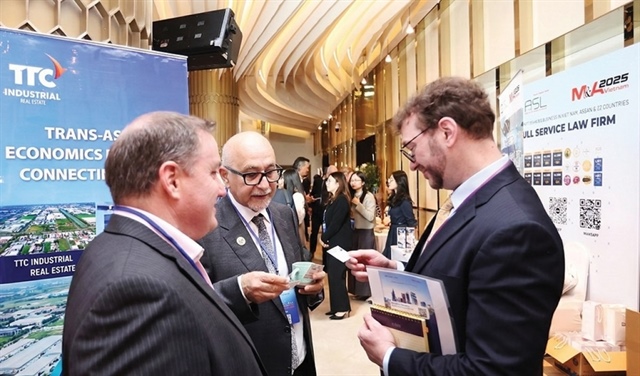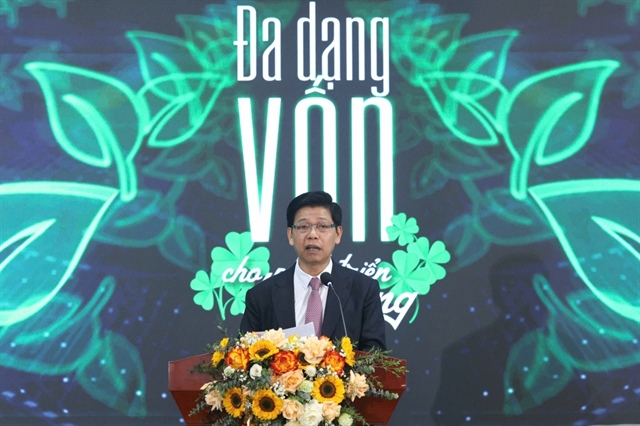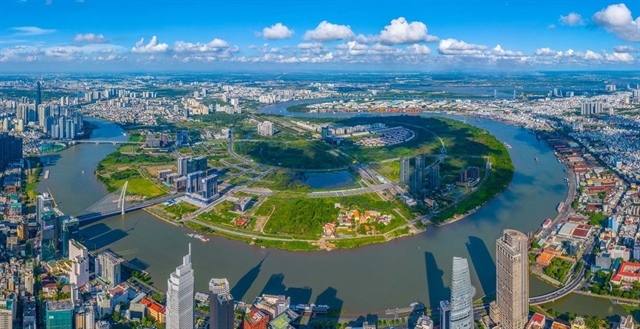FDI capital begins flowing to dyeing and textile projects
FDI capital begins flowing to dyeing and textile projects
As predicted, the foreign direct investment (FDI) flow has been heading for the dyeing and textile sector, because investors can take full advantage of the tariff preferences Vietnam can enjoy as the member of the Trans- Pacific Partnership (TPP) Agreement, expected to be wrapped up soon, and of the other free trade agreements (FTAs).

A lot of fiber manufacturers and dyeing enterprises have come to Vietnam recently to seek the opportunities to invest in the dyeing, textile and material production projects.
In November alone, Vietnam received nearly 10 foreign enterprises which have suggested setting up joint ventures with the Vietnam Textile and Garment Group (Vinatex) and its subsidiaries, to make garment materials in Vietnam
These include the big groups from the countries with developed textile and garment industries, namely Chinese Texhong, Japanese Toray International and Mitsui, Austrian Lenzing and Chinese Sunrise Textile and Garment Company.
As such, the prediction about a new wave of foreign investment into the textile and garment sector has come true. Foreign investors can see the great advantages they can enjoy if setting up production bases in Vietnam, a member of the FTAs and the expected TPP.
The first dyeing and textile joint venture was established on November 5 – the Thien Nam Sunrise Textile JSC. The partners in the joint ventures are Chinese Sunrise and Vietnamese Binh Duong-based Thien Nam Investment and Development Company.
The joint venture would develop the 24 million dollar woven fabric production project in the Bao Minh Industrial Zone in Nam Dinh. The factory would churn out one million meters a month and 300 tons of knitted fabric a month.
The project is expected to kick off early the next year and would become operational by 2014.
Meanwhile, Texhong, one of the 10 most competitive companies in the Chinese textile industry has had a working session with Vinatex, discussing the establishment of the third plant in Vietnam, either under the mode of 100 percent foreign owned, or joint venture.
Texhong has two fiber plants in Vietnam already, located in the southern province of Dong Nai and northern province of Quang Ninh.
Japanese Toray International and Mitsui have suggested two investment modes, either to develop a new project on making garment materials, or expanding the existing projects.
It is expected that the projects by the two groups with VInatex and its subsidiaries would be implemented right in 2013, so that they can put out the first products by 2015.
Meanwhile, Austrian Lenzing Group has suggested a project on an integrated factory system to make wood pulp and high quality viscose fiber in Vietnam.
Michael E. Mayer, a senior executive of Lenzing Vietnam said on Dau tu that Vietnam is the ideal place with favorable conditions to apply the vertical development model which has been utilized in Autria by Lenzing over the last 75 years.
If the project succeeds, it would not only bring benefits to Lenzing, but also bring the opportunity to Vietnamese spinning and weaving companies to use high quality artificial fiber at reasonable prices.
Tran Quang Nghi, General Director of Vinatex, said foreign investors now want to develop material production projects in Vietnam because they can see the advantages in Vietnam once the country signs the TPP and the FTA with the EU.
If the negotiations succeed, TPP would be valid as of 2015, from which the garments and textiles using domestic materials would enjoy the zero percent tariff.
Le Tien Truong, Deputy General Director said on Kinh te Vietnam newspaper that Vietnam has great advantages to attract FDI to the textile and garment sector. The WTO membership brings the advantages in materials, markets and policies. Meanwhile, Vietnam is negotiating for FTAs, under which textile and garment is always a priority core sector.
vietnamnet



























